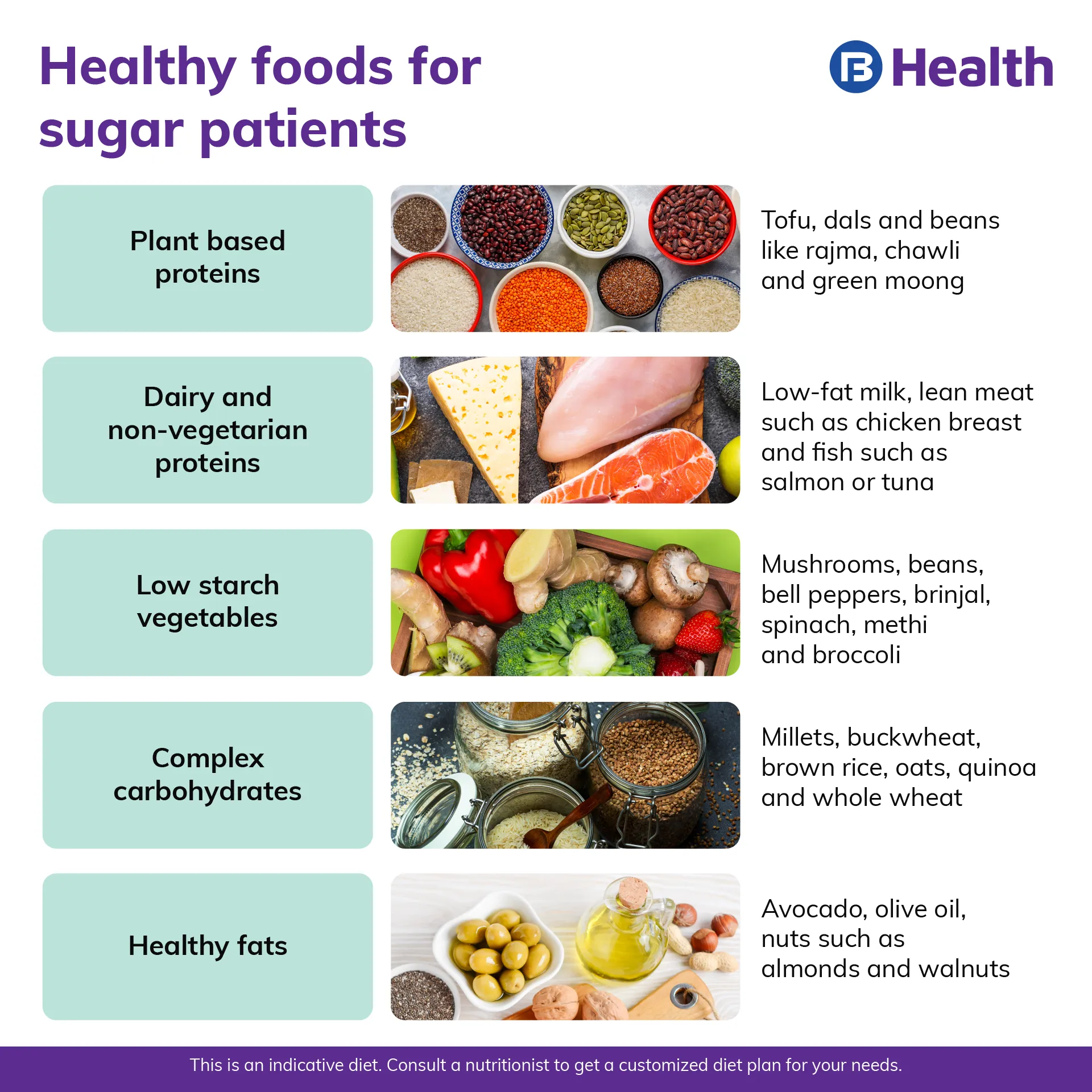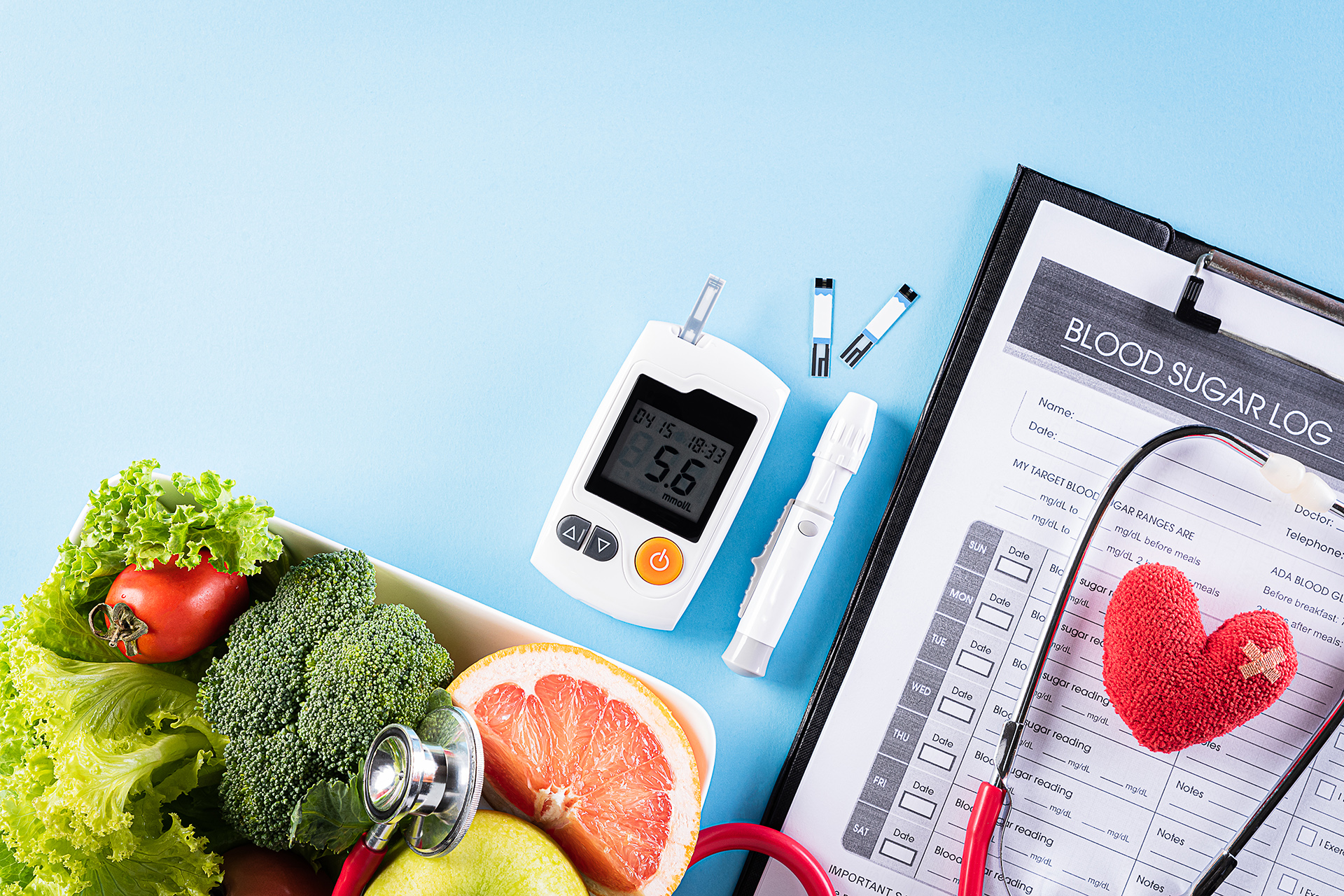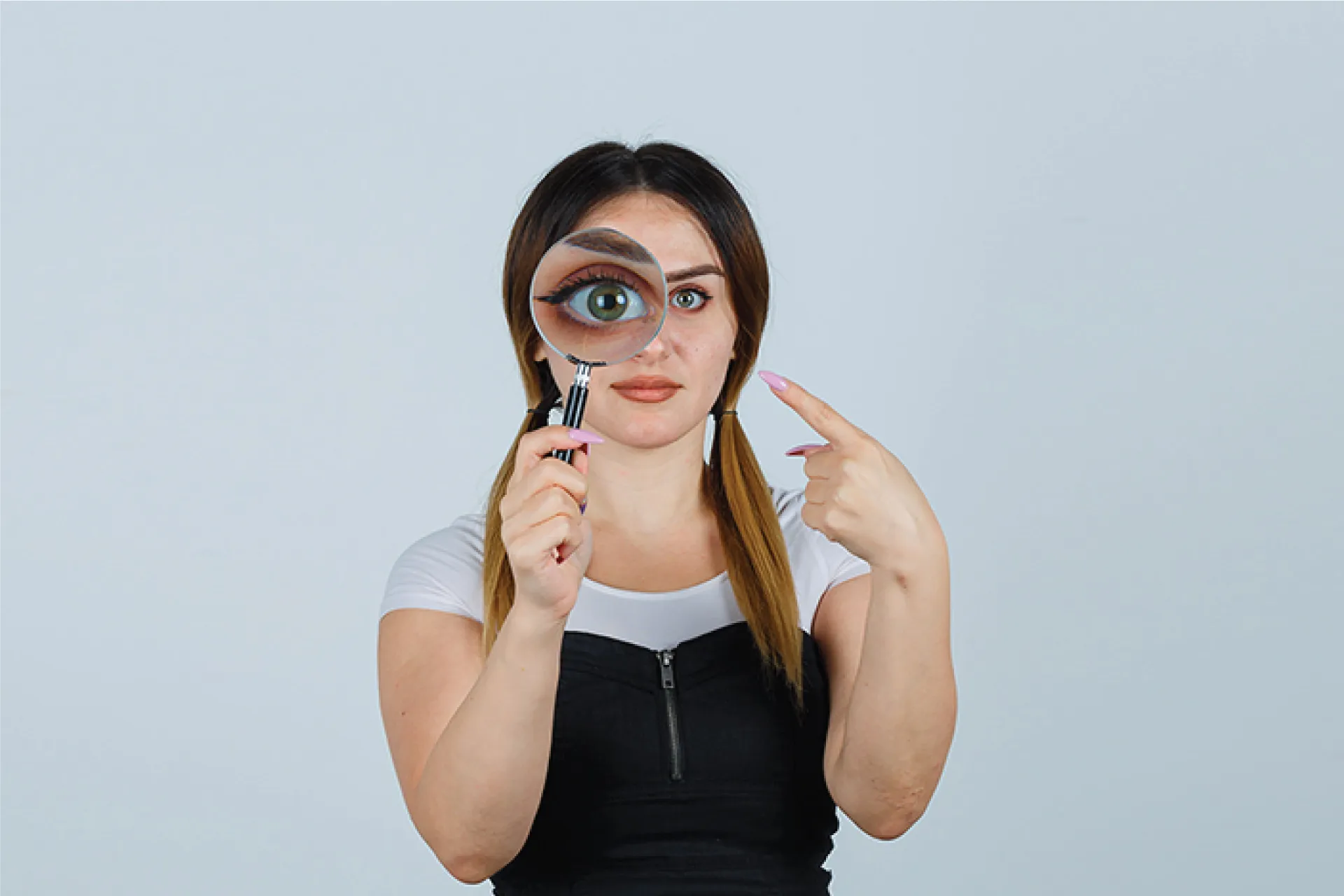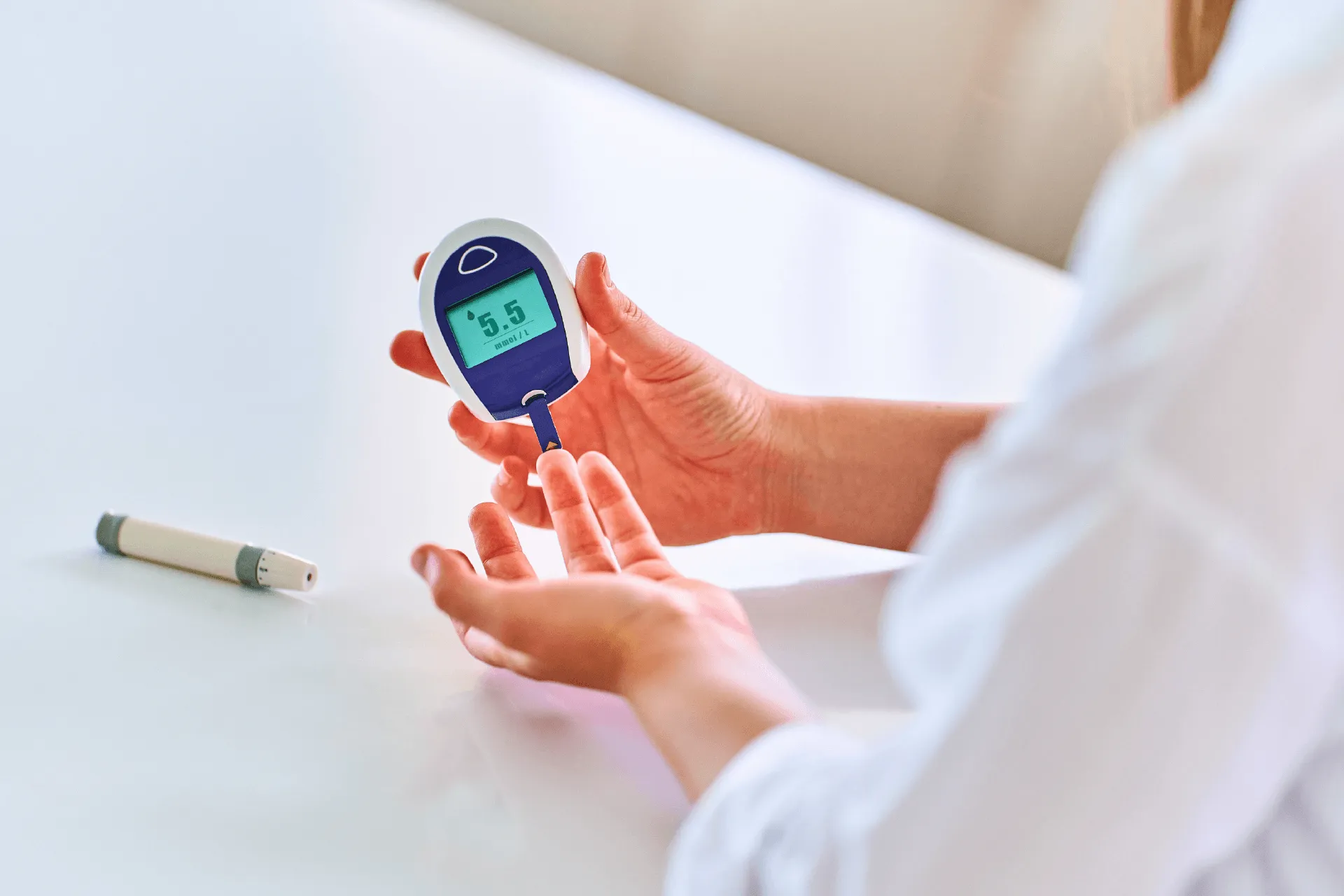General Physician | 6 min read
All you Need to Know About Type 1 Diabetes and Diet Control
Medically reviewed by
Table of Content
Key Takeaways
- Type 1 diabetes is characterised by the lack of insulin production
- Type 1 diabetes treatment can be supplemented with a diabetes diet menu
- Low GI foods, fresh vegetables and healthy fats help regulate diabetes
In the simplest terms, you are said to have type 1 diabetes if your body doesn’t produce insulin as a result of an autoimmune response. This means that your body’s immune system attacks the cells in your pancreas that produce insulin. Typically, type 1 diabetes affects children, that is those between the ages of 0 and 18 years. In India itself, over 97,000 children are believed to suffer from type 1 diabetes. While it primarily manifests itself in children, type 1 diabetes may also impact adults in the form of late-onset type 1 diabetes.
An immediate family member, such as a parent or sibling, having type 1 diabetes puts you at risk of contracting the illness. Likewise, exposure to certain viruses, and even your geographical location, as preliminary studies suggest, can be to blame.
To learn about the symptoms of this condition, how they vary from type 2 diabetes and more, keep reading.
Symptoms of Type 1 Diabetes
Type 1 diabetes has four main symptoms:
- Excessive thirst
- Excessive urination
- Increased hunger
- Sudden weight loss<span data-ccp-props="{"134233279":true}">
Typically, the first three symptoms impact children round the clock, and they are likely to feel hungry even after a meal. These primary symptoms may also be accompanied by others, such as a dry mouth, dizziness and irritability, fatigue, blurry vision, upset stomach, sudden bedwetting, difficulty in breathing, as well as frequent skin and urinary tract infections.
Type 1 diabetes symptoms differ from type 2 diabetes symptoms in several ways. For instance, the symptoms show up immediately, mostly in early childhood, and are more severe in type 1 diabetes patients than type 2. Type 2 patients may or may not visibly show symptoms, and when they do, it’s usually post the age of 40 years.
Also Read: Symptoms of Diabetes
Impact of Type 1 Diabetes on your Body
Insulin helps your body’s cells make use of glucose. In its absence, the glucose simply stays in your bloodstream, causing high blood sugar. In other words, glucose is what fuels cells in your body, and insulin is the gatekeeper that facilitates glucose’s movement into your tissues and cells.
When there is an excessive amount of glucose in your bloodstream, you’re likely to experience the following.
Weight Loss
When your body has more glucose than it needs, one of the ways in which it expels the extra glucose is by urinating more. However, glucose also takes along with it a considerable number of calories. Over a short span of time, this can result in drastic weight loss.
Severe Dehydration
When you urinate excessively, your body also loses large amounts of water. Therefore, you run the risk of dehydration.
DKA or Diabetic Ketoacidosis
Remember that cells in your body are waiting for insulin to facilitate the glucose that they need to function. When they don’t get the glucose, they resort to burning fat cells as a substitute. This process results in an acidic build-up in your bloodstream, known as ketones, which later culminates into diabetic ketoacidosis. Typically brought on by an infection, illness, malfunctioning insulin pump, or insufficient insulin dosage, DKA can be life threatening if it isn’t treated in a timely manner.
Long-Term Complications
In addition to the above, type 1 diabetes can cause nerve damage that manifests itself as a loss of sensation in one’s legs, erectile dysfunction or gastrointestinal problems. It can also put you at greater risk for cardiovascular conditions such as heart attacks, blocked arteries and strokes. Furthermore, it can result in kidney damage, pregnancy complications, and vision problems such as glaucoma.
Therefore, the key learning here is to watch out for type 1 diabetes symptoms and consult with a diabetologist at the earliest to begin treatment. Delay and negligence can put you at immense risk. When you address type 1 diabetes early on, you can lead a normal life despite it. Along with medical help, you can make changes to your diet to control the condition.
Also Read: Difference between Type 1 and Type 2 DiabetesDiet Plan for Sugar Patients
By following a few simple principles, you can create a sugar diet plan that will help you take control of type 1 diabetes instead of letting it dominate your life. Broadly speaking, you must add to your diabetes diet menu foods that low in fat, high in fibre and rich in vitamins and minerals. Simultaneously, eat animal products in moderation, especially red meat.
Staples for a Diet Plan for Sugar Patients
| Category of food | Healthy options |
| Plant-based proteins | Tofu, dals and beans like rajma, chawli and green moong |
| Dairy and non-vegetarian proteins | Low-fat milk, lean meat such as chicken breast and fish such as salmon or tuna |
| Low-starch vegetables | Mushrooms, beans, bell peppers, brinjal, spinach, methi and broccoli |
| Complex carbohydrates | Millets, buckwheat, brown rice, oats, quinoa and whole wheat |
| Healthy fats | Avocado, olive oil, nuts such as almonds and walnuts |
Ensure that your sugar diet plan<span data-contrast="auto"> features meals that have a low glycaemic index, as they facilitate a measured and steady release of sugar into your body. When you time your meals correctly with your insulin dose, such meals will give the insulin plenty of time to act effectively.
To get started on the right foot, here’s a sample diabetes diet menu that you can follow.
| Meal | Day 1 | Day 2 | Day 3 |
| Breakfast | 1 cup of poha/daliya with vegetables and 1 cup tea/coffee (no sugar) | 2 oat and banana pancakes with almonds/walnuts | 2 millet and vegetable dosas |
| Snack | Mixed nuts (approx. 25g) | 2tbsp hummus and a few cucumber sticks | 1 boiled egg/1 small apple |
| Lunch | 2 multigrain chapatis, 1 small bowl of methi dal, 1 small bowl of sabzi (mushroom and peas) and 1 bowl of mixed vegetable salad | 2 buckwheat flour chapatis, 1 small bowl of spinach dal, 1 small bowl of sabzi (stuffed capsicum), and 1 bowl of yogurt | 1 cup brown rice pulao with vegetables of your choice and 1 bowl of vegetable raita |
| Snack | Mix vegetable juice | 1 glass of buttermilk/milk | 1 bowl of soup |
| Dinner | 1–2 jowar rotis, 1 bowl of rajma and 1 small bowl of sprouts salad | Mixed greens salad with stir-fried beans, almonds and boiled eggs/grilled paneer | 1 cup daliya, dal and vegetable khichdi with 1 glass of buttermilk |
| Bedtime snacks | 2–4 walnuts, 5–6 soaked almonds or ½–1 glass milk (unsweetened) | ||
| Foods to avoid | Refined sugar, white bread, pasta, baked products like donuts, cakes and muffins, processed foods, trans-fats and animal fats, and bottled beverages such as sodas. | ||
This is an indicative diabetes diet menu, and it’s best to consult with a doctor to get a plan tailored to your specific sugar levels. A diabetologist will not only help you monitor type 1 diabetes without any hiccups, he/she will also refer you to a nutritionist if you require a special sugar diet plan. health insurance for diabetic is one of the best options to protect yourself from type 1 diabetes.
The best part is that finding a diabetologist is easy, especially with Bajaj Finserv Health. View a list of doctors in your vicinity and book an online or in-person appointment with this handy app. Using the app also gives you access to special deals and discounts from partner facilities!
References
- https://www.ncbi.nlm.nih.gov/pmc/articles/PMC4413385/
- https://www.ncbi.nlm.nih.gov/pmc/articles/PMC3543105/
Disclaimer
Please note that this article is solely meant for informational purposes and Bajaj Finserv Health Limited (“BFHL”) does not shoulder any responsibility of the views/advice/information expressed/given by the writer/reviewer/originator. This article should not be considered as a substitute for any medical advice, diagnosis or treatment. Always consult with your trusted physician/qualified healthcare professional to evaluate your medical condition. The above article has been reviewed by a qualified doctor and BFHL is not responsible for any damages for any information or services provided by any third party.




